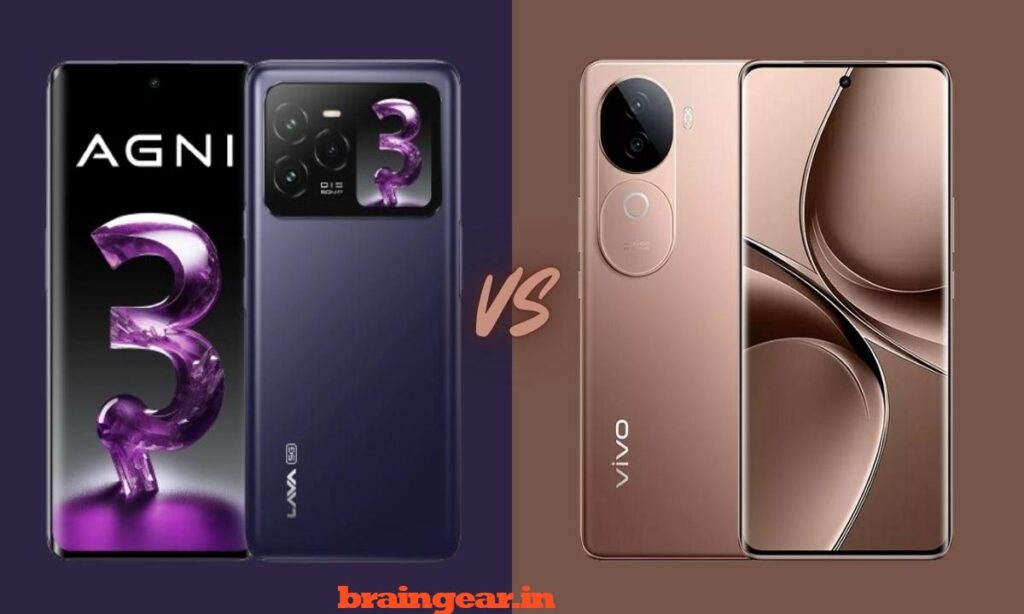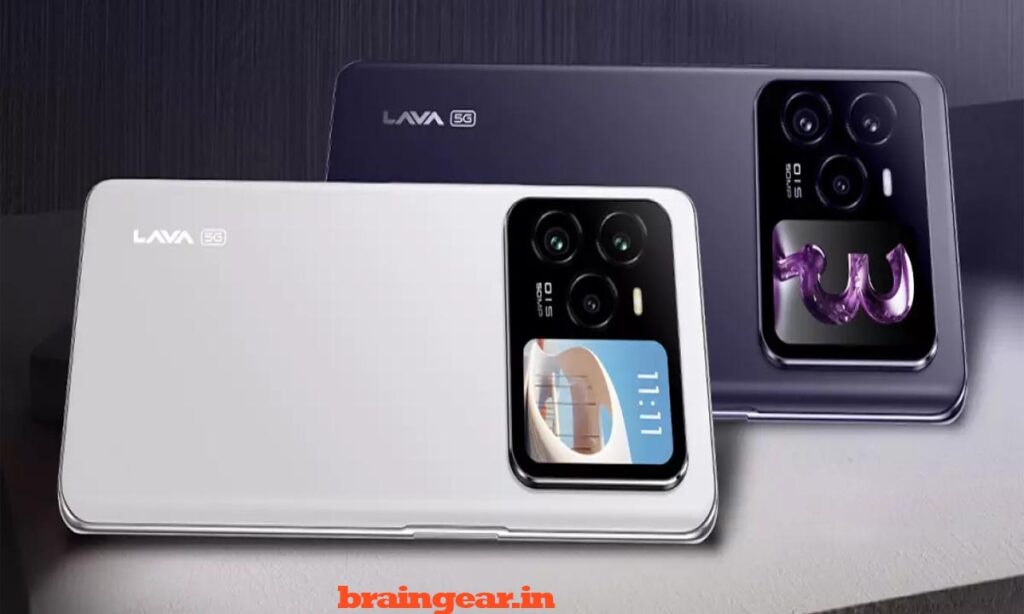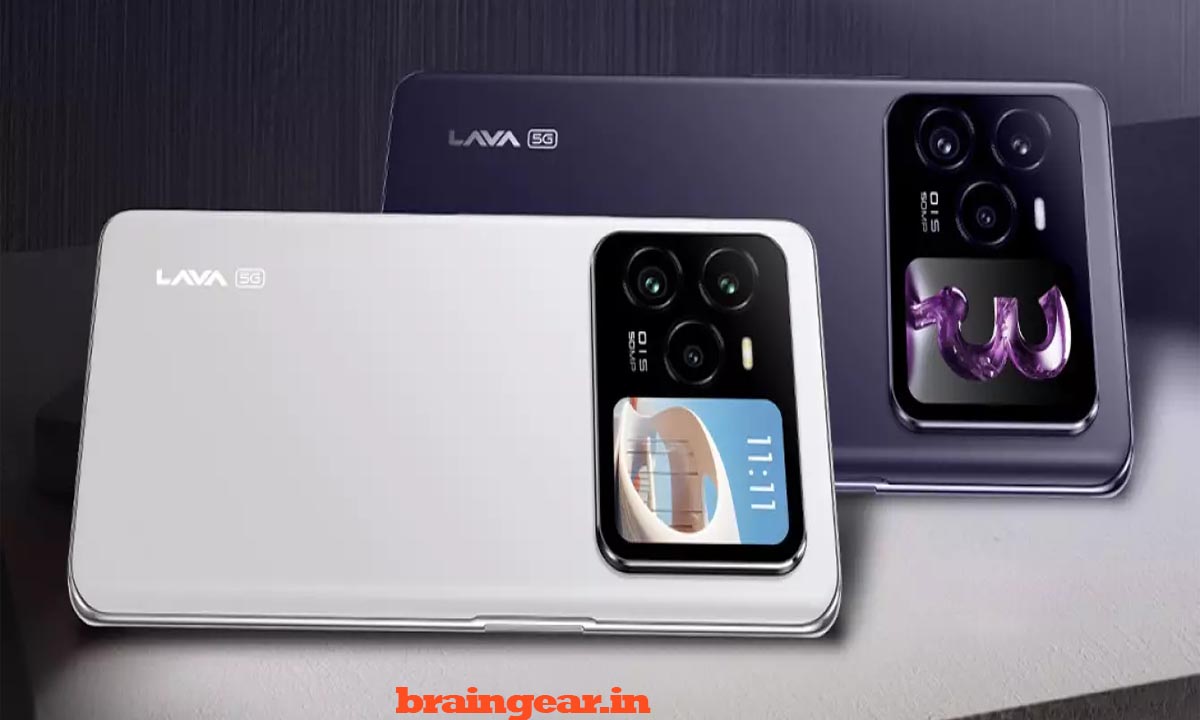Choosing the perfect mid-range smartphone in 2025 can feel overwhelming with so many options packed with cutting-edge features. If you’re torn between the Lava Agni 3 and the Vivo T4 Ultra, you’re not alone. Both devices promise premium features at budget-friendly prices, but which one truly delivers the best value for your money? In this detailed comparison, we at braingear# break down the specs, performance, cameras, and more to help you make an informed decision. Whether you’re a gamer, a photography enthusiast, or just need a reliable daily driver, this article has you covered. Read on to discover which phone suits your needs best!
Overview of Lava Agni 3 and Vivo T4 Ultra
The Lava Agni 3 and Vivo T4 Ultra are two standout mid-range smartphones in India’s competitive market, both launched in 2024. The Lava Agni 3, priced starting at ₹16,999, is a homegrown gem offering innovative features like a secondary AMOLED display and a customizable Action Key. The Vivo T4 Ultra, priced at ₹37,999, brings premium aesthetics and robust performance, targeting users who want a flagship-like experience on a budget.
Both phones cater to similar audiences but differ in design philosophy, camera capabilities, and software experience. Let’s dive into the details to see how they stack up.
Design and Build Quality
Lava Agni 3: Premium Yet Practical
The Lava Agni 3 sports a sleek glass sandwich design with a curved 6.78-inch AMOLED display and a matte finish back, available in Heather Glass and Pristine White. Weighing 212 grams and measuring 8.8mm thick, it feels premium but slightly heavy. Its standout feature is the 1.74-inch AMOLED secondary display (InstaScreen) on the back, which serves as a viewfinder for selfies, displays notifications, and controls music or timers. The customizable Action Key, inspired by the iPhone 16, allows quick access to functions like screenshots or flashlight.
However, the lack of Gorilla Glass protection and plasticky buttons slightly detract from its premium feel. The IP64 rating offers dust and splash resistance but isn’t as robust as higher IP ratings.
Vivo T4 Ultra: Sleek and Modern
The Vivo T4 Ultra boasts a glossy plastic back with a premium metallic frame, available in vibrant colors. At a slightly slimmer and lighter build (exact dimensions vary by model), it feels more comfortable for prolonged use. Its design draws inspiration from Vivo’s higher-end V series, with a clean, modern aesthetic. The phone also features an IP64 rating, matching the Agni 3 in dust and water resistance.
Unlike the Agni 3, the Vivo T4 Ultra skips the secondary display and Action Key, focusing on a minimalist design. However, it includes Gorilla Glass 5 for better durability, giving it an edge in ruggedness.

Design Comparison Table
| Feature | Lava Agni 3 | Vivo T4 Ultra |
|---|---|---|
| Material | Glass back, plastic frame | Plastic back, metallic frame |
| Weight | 212g | Lighter (varies by model) |
| Thickness | 8.8mm | Slimmer (varies by model) |
| IP Rating | IP64 | IP64 |
| Unique Features | Secondary AMOLED, Action Key | Gorilla Glass 5 |
Display: Size, Quality, and Experience
Lava Agni 3: Dual Displays for Versatility
The Lava Agni 3 features a 6.78-inch 1.5K AMOLED display with a 120Hz refresh rate and 1,200 nits peak brightness. This panel delivers vibrant colors and deep blacks, ideal for media consumption. The curved design enhances immersion but may cause accidental touches during gaming or video playback. The 1.74-inch rear AMOLED display is a unique addition, enabling users to check notifications or take high-quality selfies with the rear camera. However, outdoor visibility could be better due to the relatively low brightness compared to competitors.
Vivo T4 Ultra: Crisp and Reliable
The Vivo T4 Ultra sports a 6.7-inch AMOLED display with Full-HD+ resolution and a 120Hz refresh rate. While it has a slightly smaller screen and lower resolution than the Agni 3, it offers excellent color accuracy and smoothness. The flat display reduces accidental touches, making it more practical for gaming. Its peak brightness is comparable, ensuring good visibility in sunlight.
Display Verdict
The Lava Agni 3 wins for its higher resolution and innovative secondary display, but the Vivo T4 Ultra’s flat panel is more practical for everyday use. Both offer excellent multimedia experiences, with Dolby Atmos support on the Agni 3 adding a slight edge for audio enthusiasts.
Performance: Powering Your Day
Lava Agni 3: Solid Mid-Range Performance
Powered by the MediaTek Dimensity 7300X chipset, the Lava Agni 3 delivers strong performance for its price. With 8GB RAM (expandable via 8GB virtual RAM) and up to 256GB storage, it handles multitasking, browsing, and casual gaming smoothly. In benchmarks, it scores around 6,76,483 on AnTuTu, competitive for its segment. Games like BGMI and Real Racing 3 run well at medium settings, though high graphics may cause occasional frame drops. Thermal management is impressive, keeping the device cool during extended use.
Vivo T4 Ultra: A Step Ahead
The Vivo T4 Ultra uses the MediaTek Dimensity 7300 chipset, which is slightly more powerful than the Agni 3’s 7300X. Paired with up to 12GB RAM and 256GB storage, it excels in multitasking and demanding applications. It scores around 7,02,347 on AnTuTu, edging out the Agni 3. Gaming performance is slightly better, with smoother frame rates in titles like Call of Duty: Mobile. The Vivo T4 Ultra also maintains good thermals, making it a reliable choice for gamers.
Performance Comparison
| Benchmark/Test | Lava Agni 3 | Vivo T4 Ultra |
|---|---|---|
| AnTuTu | 6,76,483 | 7,02,347 |
| Geekbench Single-Core | 1,041 | 1,044 |
| Geekbench Multi-Core | 3,239 | 3,011 |
| Gaming | Smooth at medium settings | Smoother at high settings |
The Vivo T4 Ultra takes the lead in raw performance, but the Lava Agni 3 holds its own, especially in multi-core tasks and thermal efficiency.
Camera: Capturing the Moment
Lava Agni 3: Versatile but Inconsistent
The Lava Agni 3 features a triple rear camera setup: a 50MP primary sensor with OIS, an 8MP ultrawide, and an 8MP telephoto with 3x optical zoom. This is a rare inclusion in the sub-₹25,000 segment. Daylight shots are vibrant, but details and dynamic range lag behind competitors like the Nothing Phone (2a). The ultrawide lens suffers from distortion, and low-light performance is grainy, even with night mode. The 16MP front camera produces average selfies, but the rear camera’s selfie mode via the InstaScreen offers better quality.
Vivo T4 Ultra: Balanced Photography
The Vivo T4 Ultra opts for a dual-camera system: a 50MP primary sensor and a 2MP depth sensor. While it lacks a telephoto lens, the primary camera delivers sharper images with better dynamic range in daylight. Low-light shots are clearer than the Agni 3, thanks to Vivo’s optimized night mode. The 50MP front camera is a standout, capturing detailed selfies with accurate skin tones, outperforming the Agni 3 in this area.
Camera Verdict
The Lava Agni 3’s telephoto lens is a unique advantage, but the Vivo T4 Ultra offers more consistent performance across lighting conditions and a superior selfie camera. For photography enthusiasts, the Vivo T4 Ultra is the better choice.
Battery Life and Charging
Lava Agni 3: Reliable with Fast Charging
The Lava Agni 3 houses a 5,000mAh battery, lasting a full day with moderate use (15-20% remaining). It supports 66W fast charging, taking about 43 minutes to charge from 20% to 100%. However, the base variant doesn’t include a charger, which may inconvenience some buyers.
Vivo T4 Ultra: Larger and Faster
The Vivo T4 Ultra features a 5,500mAh battery, offering slightly better endurance, lasting up to a day and a half with similar usage. Its 80W fast charging is faster, fully charging in around 35 minutes. Additionally, it supports reverse wired charging, a feature absent in the Agni 3.
Battery Comparison
| Feature | Lava Agni 3 | Vivo T4 Ultra |
|---|---|---|
| Battery Capacity | 5,000mAh | 5,500mAh |
| Charging Speed | 66W | 80W |
| Charging Time | ~43 mins (20% to 100%) | ~35 mins (20% to 100%) |
| Reverse Charging | No | Yes |
The Vivo T4 Ultra wins with its larger battery and faster charging, making it ideal for power users.
Software: Clean vs. Custom
Lava Agni 3: Near-Stock Experience
The Lava Agni 3 runs Android 14 with a near-stock interface, free of bloatware. Lava promises three major OS updates and four years of security patches, ensuring longevity. The clean UI is smooth, and the Action Key and InstaScreen add functional value, though the latter’s software optimization needs refinement.
Vivo T4 Ultra: Feature-Rich but Bloated
The Vivo T4 Ultra also runs Android 14 but uses FuntouchOS, which includes pre-installed apps that can be uninstalled. It offers two OS updates and three years of security patches, slightly less than the Agni 3. FuntouchOS is feature-rich but may feel cluttered for users preferring a minimalist experience.
Software Verdict
The Lava Agni 3’s clean software and longer update commitment make it the winner for users who value simplicity and longevity.
What’s New in 2025?
In 2025, both phones remain competitive due to their 5G connectivity and modern chipsets. The Lava Agni 3 stands out with its secondary display and Action Key, features typically reserved for flagships. Its focus on a bloatware-free experience aligns with the growing demand for clean software. The Vivo T4 Ultra, meanwhile, capitalizes on Vivo’s reputation for camera optimization and fast charging, appealing to users seeking a balanced, premium-feeling device. Both phones support Wi-Fi 6E, ensuring future-ready connectivity.

Price and Value for Money
- Lava Agni 3: Starts at ₹16,999 (8GB/128GB), with the 8GB/256GB variant at ₹20,999.
- Vivo T4 Ultra: Priced at ₹37,999 for the 12GB/256GB model.
The Lava Agni 3 offers better value for budget-conscious buyers, while the Vivo T4 Ultra justifies its higher price with superior cameras, battery, and performance.
Pros and Cons
Lava Agni 3
Pros:
- Innovative secondary AMOLED display
- Customizable Action Key
- Clean, bloatware-free Android 14
- Affordable pricing
- Decent performance for the price
Cons:
- Average camera performance
- No Gorilla Glass protection
- Base variant lacks charger
Vivo T4 Ultra
Pros:
- Superior camera performance
- Larger battery with faster charging
- Gorilla Glass 5 durability
- Smooth performance for gaming
- Premium design
Cons:
- Higher price point
- Bloated FuntouchOS
- Shorter software update commitment
Why Trust braingear?
At braingear#, we pride ourselves on delivering in-depth, unbiased tech reviews to help you make informed decisions. Our team of tech enthusiasts rigorously tests devices and stays updated with industry trends to provide accurate comparisons. Learn more about our mission on our About Us page or reach out via our Contact Us page for feedback or inquiries.
Conclusion
The Lava Agni 3 vs Vivo T4 Ultra battle boils down to priorities. If you value innovation, a clean software experience, and affordability, the Lava Agni 3’s secondary display, Action Key, and budget-friendly price make it a compelling choice. However, if you prioritize superior cameras, a larger battery, and faster charging, the Vivo T4 Ultra is the better pick, despite its higher cost. Both phones excel in the mid-range segment, but the Vivo T4 Ultra edges out slightly for its polished performance and photography.
Which phone are you leaning toward? Share your thoughts in the comments, or sign up for our newsletter at braingear# for more tech insights! For further reading, check out reviews on 91mobiles or Digit.
Note: All photos and videos have been taken from Google or YouTube, so if you have any problem with the photo then mail us.
If you find any problem in this post or want to remove this post, then contact us: CONTACT US

